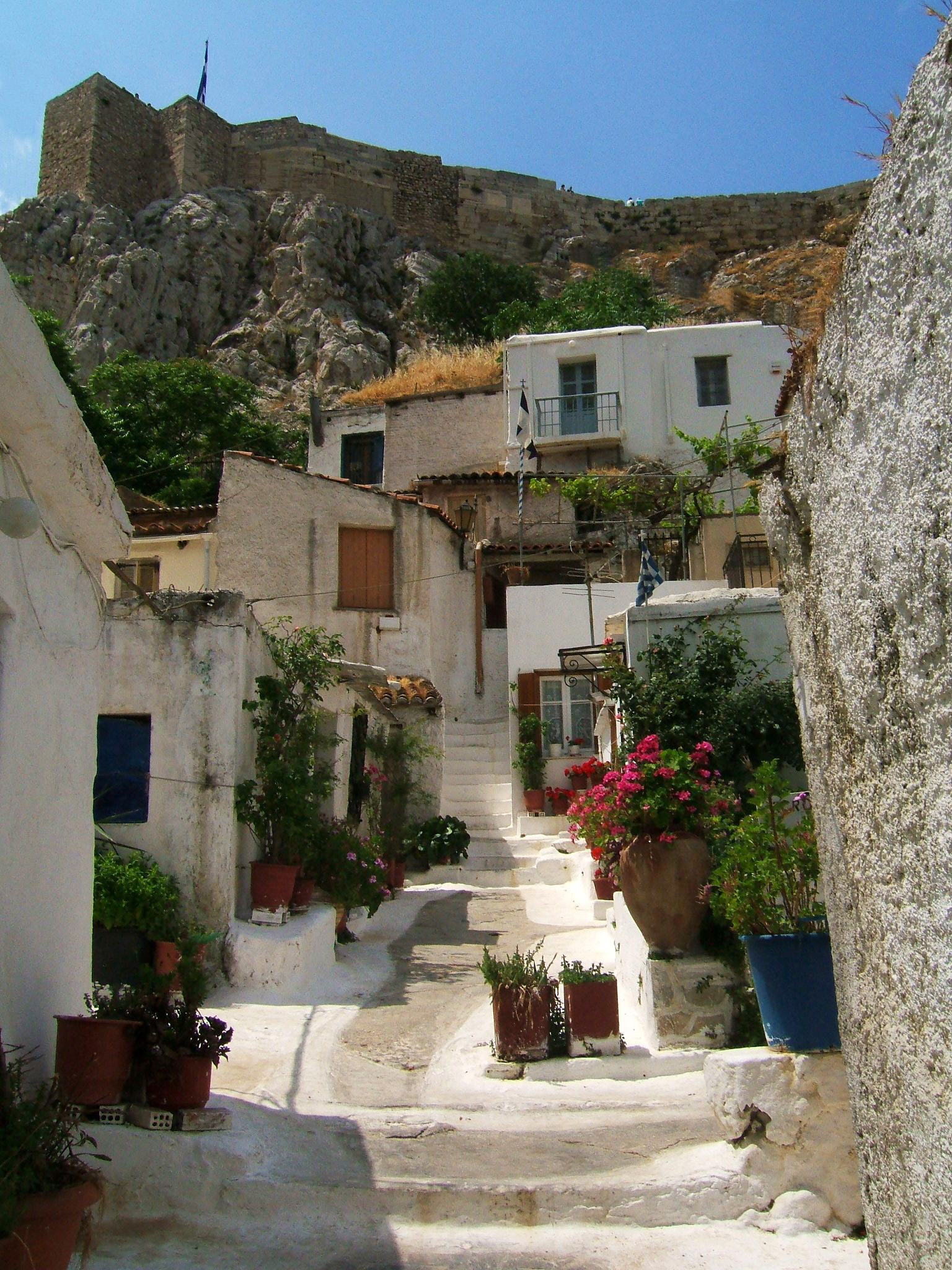Anafiotika on:
[Wikipedia]
[Google]
[Amazon]
Anafiotika ( ) is a scenic tiny neighborhood of  In 1922,
In 1922, Rick Steves' Europe Video
/ref>
Archaeology of city of Athens
Anafiotika, ''A touch of the Aegean''
by the National Technical University of Athens {{Authority control Neighbourhoods in Athens Architecture of Athens
Athens
Athens ( ; el, Αθήνα, Athína ; grc, Ἀθῆναι, Athênai (pl.) ) is both the capital and largest city of Greece. With a population close to four million, it is also the seventh largest city in the European Union. Athens dominates a ...
, part of the old historical neighborhood called Plaka
Pláka ( el, Πλάκα) is the old historical neighborhood of Athens, clustered around the northern and eastern slopes of the Acropolis, and incorporating labyrinthine streets and neoclassical architecture. Plaka is built on top of the residenti ...
. It lies in northerneast side of the Acropolis hill. The first houses were built in the era of Otto of Greece
Otto (, ; 1 June 181526 July 1867) was a Bavarian prince who ruled as King of Greece from the establishment of the monarchy on 27 May 1832, under the Convention of London, until he was deposed on 23 October 1862.
The second son of King Ludw ...
, when workers from the island of Anafi
Anafi or Anaphe ( el, Ανάφη; grc, Ἀνάφη) is a Greek island community in the Cyclades. In 2011, it had a population of 271. Its land area is . It lies east of the island of Thíra (Santorini). Anafi is part of the Thira regional un ...
came to Athens in order to work as construction workers in the refurbishment of King Othon's Palace. The first two inhabitants were listed as G. Damigos, carpenter, and M. Sigalas, construction worker. Soon, workers from other Cycladic islands also started to arrive there, to work as carpenters or even stone and marble workers, in a further building reconstruction period in Athens, but also in the following era after the end of the reign of King Otto.
 In 1922,
In 1922, Greek refugees from Asia Minor
Greek refugees is a collective term used to refer to the more than one million Greek Orthodox natives of Asia Minor, Thrace and the Black Sea areas who fled during the Greek genocide (1914-1923) and Greece's later defeat in the Greco-Turkish War ...
also established here, altering the population that was up to that time only from the Cycladic islands. In 1950, part of this neighborhood was destroyed for archeological research and in 1970 the state started to buy the houses. In the modern era, there are only 45 houses remaining, while the little streets from Stratonos to the Acropolis rock are still unnamed and the houses are referred to as "Anafiotika 1", "Anafiotika 2", etc.
The neighborhood was built according to typical Cycladic architecture, and even nowadays gives to visitors the feel of Greek islands in the heart of the city, with white walls and small spaces, usually with the presence of bougainvillea
''Bougainvillea'' ( , ) is a genus of thorny ornamental vines, bushes, and trees belonging to the four o' clock family, Nyctaginaceae. It is native to eastern South America, found from Brazil, west to Peru, and south to southern Argentina. ...
flowers. Houses are small and mostly cubic, small streets that often end up to ladders or even deadends at terraces, where one can sit and enjoy the night view of the city. ''"In this oasis of tranquility, nestled beneath the walls of the Acropolis, the intensity of Athens seems miles away"''.../ref>
References
External links
Archaeology of city of Athens
by the National Technical University of Athens {{Authority control Neighbourhoods in Athens Architecture of Athens